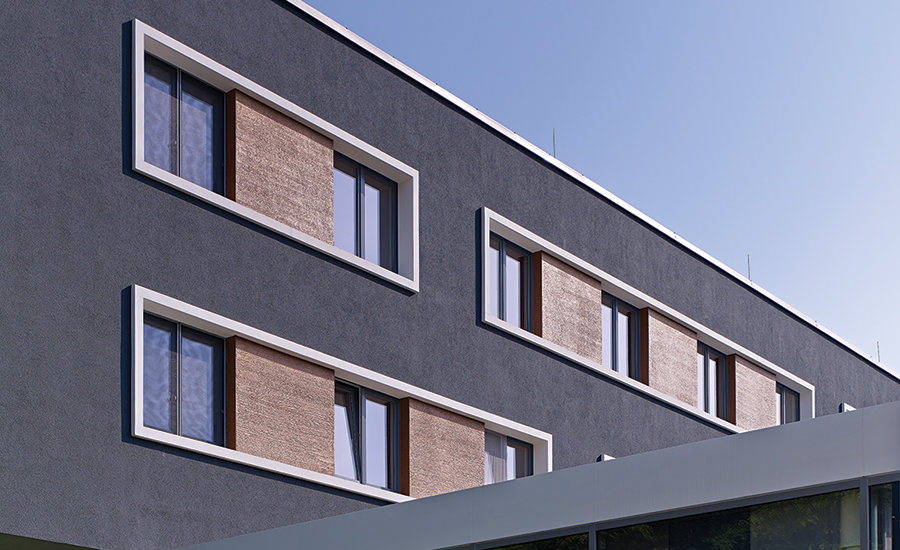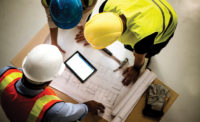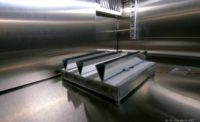Metal That Has Mettle

StoColor® Metallic coating system is an easy-to-apply two-step process that creates luminous depth, allowing subtle light-induced color shifts to produce the dynamic metal look.
Think about the last time you drove past a construction site where a new building is being erected. As it takes shape over time, its exterior wall — its face to the world — is far from monochromatic or made from a singular material.
Today’s design and construction trends have architects pushing the limits. To achieve their creative vision, they seek to integrate a variety of construction materials for a modern, sophisticated look or an updated take on a tried-and-true approach.
The result: a building that uses multiple aesthetic options and creates luminous depth as part of an integrated system for the exterior wall — whether it is a new hotel, an addition to a growing healthcare facility, a high-rise residential tower, or the new corporate headquarters for a multinational company. The landscape has changed to incorporate varying aesthetics into today’s buildings. For redesigned spaces and new construction, architects are utilizing simulated brick, metal panels, metallic trim, and more in one design for a contemporary aesthetic.
How can architects shape and mold the look of metallic cladding so they have different textures and finishes that create even more design possibilities?
Moreover, how can designers and specifiers best rely on the choices they make for external metal cladding when it comes to durability? How can those designers tap into the modern look delivered by metal cladding yet ensure the cladding withstand the relentless forces of Mother Nature?
The incorporation of metallic coatings provides added benefit on multiple fronts — greater durability, and enhanced aesthetics for prefabricated systems, prepared vertical walls, and interior drywall surfaces.
It all begins by taking the systems approach for the building façade.
DELIVERING DURABILITY: THE SYSTEMS APPROACH
A building’s façade is constantly challenged by the forces of Mother Nature — rain, wind, snow, UV rays, temperature changes, and more. The building enclosure’s durability is dependent on having effective components in place, making it a necessity to utilize control layers to protect from the elements and create a comfortable interior for occupants.
These control layers include:
- A vapor control layer that is permeable or impermeable per the designer specifications to minimize condensation by controlling the flow of water vapor as it shifts from high- to low-pressure areas.
- An air control layer that reduces energy and condensation loss by limiting the uncontrolled flow of air through the wall assembly.
- A water penetration control layer that prevents water from entering the wall cavity and is flashed to the cladding’s exterior.
- A thermal control layer to mitigate energy loss and prevent thermal bridging.
- A durable, water-shedding layer to protect against environmental elements, impacts, UV exposure, pollutants, and more.
Smartly, fully engineered systems contain all these control layer components in an integrated, tested system. As a single-source and warrantied solution, the layers work in concert to deliver a holistic approach.
When the building enclosure is complete and constant, the exterior facade can deliver a range of performative aesthetics to bring the architect’s vision to life, including reflectivity and metallic surfaces in a variety of colors and textures.

StoColor® Metallic coating system can give the look of metal panels while achieving continuous insulation in a single lightweight system.
AN EXPANDED PALETTE
Metal panels deliver a flat façade or a one-color gloss. Add a metallic coating with a flake, and an added shine is brought to the design to catch the eye of viewers.
With metallic coatings, designers can feature the aesthetic of metal at a fraction of the cost while achieving continuous insulation in a single lightweight system.
The resulting facade attains a reflective property that could only be found previously in natural metals. Facades finished with metallic coatings shift in color as a person’s perspective on the building changes, mimicking how light reflects off a metallic surface.
Metallic coatings are applied as a two-part, acrylic-based, high-performance coating system. The metallic coating can be applied as a new coating or over existing coatings and on all materials, allowing new opportunities for texture and versatility so designers have the freedom to follow their inspiration.
Like other coating systems, metallic coatings can be roller applied or spray applied with no special equipment needed. In addition, metallic coatings are part of the existing installation and finishing process without the need to incorporate additional steps.
The metallic coating system is a highly durable surface backed by thousands of hours of testing and real-world weather performance testing. Durability through elements from a two-part application provides UV stability and long-lasting performance.
When a building that features traditional metal panels suffers damage from something like a hailstorm, the entire panel must be removed and replaced.

With 15 standard colors, applied over textured or smooth surfaces, the versatility of StoColor® Metallic coating system provides a custom look for any project.
PRIMED FOR POSSIBILITIES
The demand for greater versatility in building materials continues to gain traction. Building owners, designers, and contractors are seeking more choices that bring enduring value. They want options.
Metallic coatings blend durability over the long haul with nearly limitless aesthetic options, combing range of design and texture within the same color palette. The result: A shifting paradigm for the exterior wall of any building that seeks a metal cladding aesthetic.
Looking for a reprint of this article?
From high-res PDFs to custom plaques, order your copy today!





